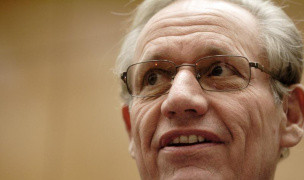 8 用語
8 用語ホーム > 用語 > アルメニア語 (HY) > գործազրկություն
գործազրկություն
The number of people of working age without a job is usually expressed as an unemployment rate, a percentage of the workforce. This rate generally rises and falls in step with the business cycle--cyclical unemployment. But some joblessness is not caused by the cycle, being structural unemployment. There are also voluntary unemployment and involuntary unemployment. Some people who are not in work have no interest in getting a job and probably should not be regarded as part of the workforce. Others choose to be out of work briefly while they look for, or are waiting to start, a new job. This is known as frictional unemployment. In the 1950s, the Phillips curve seemed to show that policymakers could reduce unemployment by having higher inflation. Economists now say there is a NAIRU (non-accelerating inflation rate of unemployment). In most markets, prices change to keep supply and demand in equilibrium; in the labor market, wages are often sticky, being slow to fall when demand declines or supply increases. In these situations, unemployment often increases. One way to tackle this may be to boost demand. Another is to increase labor market flexibility.
- 品詞: 名詞
- 同義語
- ブロッサリ
- 産業/ドメイン 経済
- カテゴリ 経済
- Company: The Economist
- 製品
- 頭文字-略称:
メンバーのコメント
ニュース関連の用語
ピックアップされた用語
phylum placozoa
Macroscopic, flattened marine animals, composed of ventral and dorsal epithelial layers enclosing ...
phylum cnidaria
Cnidarians. Hydras, hydroids, jellyfish, sea anemones, and corals. Free-swimming or sessile, with ...
share a term with millions
Share a term with millions of users around the world and increase your online visibility.Share a ...
oak
Genus native to the Northern Hemisphere with spirally arranged leaves, catkins for flowers and ...
Everest
The last but not least mount Everest. The Earth's highest mountain, with a peak at 8,848 metres ...
aglaonema
Genus of about 20 species of usually rhizomatous, evergreen perennials from tropical forest in Asia. ...
Robojelly
Robojelly is a hydrogen-powered robot desgined in the United States that moves through the water ...
Ferdinand Porsche
Ferdinand Porsche (3 September 1875 – 30 January 1951) was an Austrian-German automotive engineer ...
Marzieh Afkham
Marzieh Afkham, who is the country’s first foreign ministry spokeswoman, will head a mission in east ...





